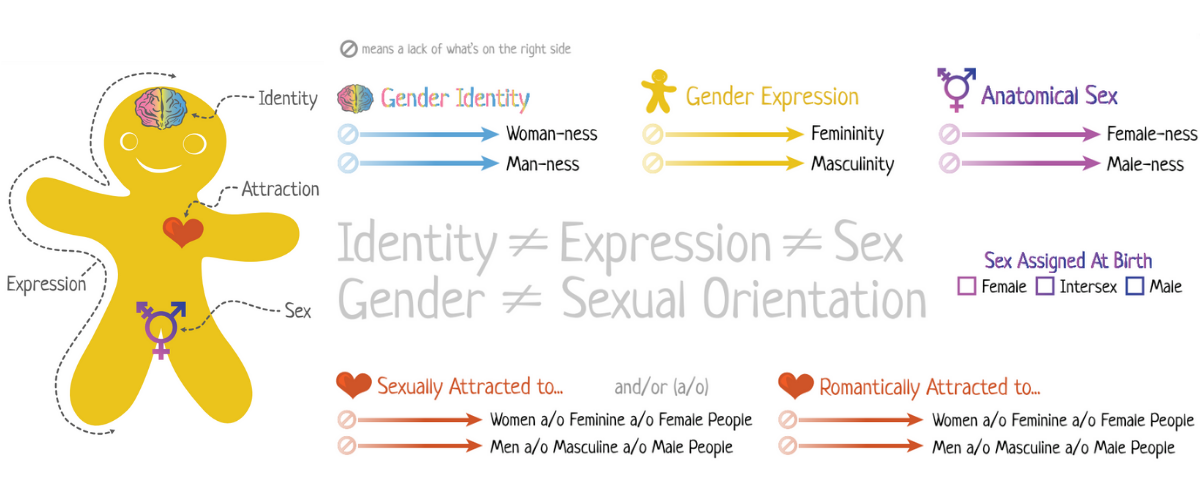pronoun /ˈprəʊnaʊn/
A word that can function as a noun phrase used by itself and that refers either to the participants in the discourse (e.g. I, you ) or to someone or something mentioned elsewhere in the discourse (e.g. she, it, this ).
As humans, we’re quick to make assumptions and judgements. There’s a clever part of our brain that’s fast, intuitive, and associative – a great pattern-making machine. It enables us to make sense of the world around us, but it often makes mistakes.
We’re often guilty of assuming someone’s gender based on their physical appearance or even perhaps their name. Have you even arranged a call or meeting with Alex or Sam and been caught off guard because you were expecting a person of a particular sex? I’ve been guilty of this on countless occasions! We also often default to gender being binary but it exists on a spectrum and can be different from our biological sex.
This GenderBread diagram does a great job of visually explaining the concept of gender..
 Genderbread person version 4 created and uncopyrighted 2017 by Sam Killermann
Genderbread person version 4 created and uncopyrighted 2017 by Sam Killermann
So, what pronouns do people use?
There’s perhaps more than you think. Some common examples include; she/her, he/his, they/theirs but there’s also ze/hir, ze/zir, per/pers, ey/em, xe/xem, etc. There’s also individuals who might choose not to use pronouns and decide to simply use their name instead.
|
they |
them | their | theirs |
themselves |
|
she/he |
her/him | her/his | hers/his |
her/himself |
| ze | hir (pronounced as ‘here’) |
hir | hirs |
hirself |
| ze | zim | zir | zirs |
zirself |
**Note: This isn’t an exhaustive list**
How do I find out what pronouns a person uses?
Simply ask..
- When you meet someone for the first time, introduce yourself and along with the pronouns you use, then ask ‘How should I refer to you?’
- In group settings such as meetings ask for people to introduce themselves along with their pronouns when you’re going through the initial round-robin. It’s always useful to explain the context and ensure that you don’t insist people share – if they’d like to just share the name instead then that’s totally fine.
And if you get it wrong?
Don’t worry! We’re all human at the end of day and we do make mistakes. I’d say that we all have a short grace period and when we do get it wrong it’s a simple case of apologising, correcting yourself and then moving on swiftly – don’t dwell on it!
Anything else I should be mindful of?
Yes! I think it’s also important to understand the impact of the language we use and how it might be (unintentionally) exclusive. Be conscious of phrases such as ‘Ladies and Gentlemen’ – try replacing this with ‘Colleagues and Friends’ and particularly ‘Hi guys!’… I know people see the terms ‘guys’ as neutral but if we referred to a group of people as ‘girls’ instead, it doesn’t quite sit right, does it? It has become normalised to default to male as a ‘neutral’ term so replacing this with ‘Hi folks’ would be a good alternative.
Where possible, add your own pronouns to the likes of your email signature, LinkedIn profile, bios etc. this normalises the importance of using correct pronouns and is a really simple way of fostering an inclusive environment.